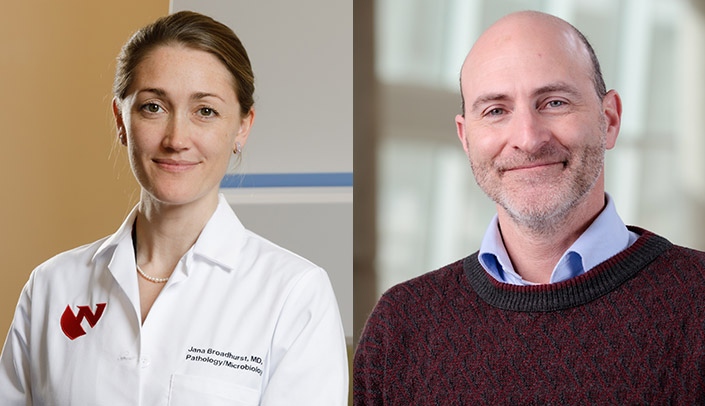In the midst of a high-consequence infection pandemic, David Brett-Major, MD, professor of epidemiology in the College of Public Health, and Jana Broadhurst, MD, PhD, director of the Nebraska Biocontainment Unit clinical laboratory, had an idea:
“We’ve had DIY bio,” Dr. Brett-Major said, “we have DIY science. Maybe now we have DIY epi.”
DIY stands for do-it-yourself. And epi is short for epidemiology, which is the study (scientific, systematic and data-driven) of the distribution (frequency, pattern) and determinants (causes, risk factors) of health-related states and events (not just diseases) in specified populations, according to the Centers for Disease Control and Prevention.
“We put all that information together in ways that help people understand the disease and develop tools to help people fight it,” Dr. Brett-Major said.
The DIY epi idea is one of those tools.
In short, Drs. Brett-Major and Broadhurst are giving clinicians and researchers an instrument that allows them to take large-scale epidemiology and drill it down so it is applicable to their specific circumstance or individual patient.
They call this project the Clinical Characterization Protocol for Severe Emerging Infections (CCPSEI), a prospective, observational cohort study that enrolls suspected and confirmed cases of high-consequence pathogens, such as pandemic-threat disease. Currently, obviously, COVID-19.
CCPSEI is novel in two ways. First, the UNMC project is making its information available in real time, rather than waiting for publication.
“This is the first time an ongoing anonymized study like this has been made public online in the U.S. in such a way,” said Greg Brown, marketing and communications specialist in the College of Public Health.
“I’m not aware of anyone ever doing it like this,” Dr. Brett-Major said.
He said, though not complete, the data is systematic and quality assured.
And having access to this data immediately, during an ongoing pandemic, makes it especially valuable to clinicians and researchers, thanks to its second novel component.
“This is an unusual study in its ability to put information together in ways that people who care for patients, and those who do research, think about these things,” Dr. Brett-Major said.
As in, how can I tie this finding to my specific question?
“They can look for people,” enrolled in the study, Dr. Brett-Major said, “who look just like their patient.”
“Our patients’ willingness to contribute to clinical research is at the heart of a global rapid response to the COVID-19 pandemic,” Dr. Broadhurst said. “We hope that open, real-time access to CCPSEI data will maximize the impact of the knowledge our patients have offered to the global community.”
CCPSEI was among the College of Medicine’s COVID-19 Rapid Response grants.

What should an educator or researcher do with the tool? Seems like a little more detail is needed.
Use of the tool, accessible through the link in the story, would depend on the educator’s or researcher’s goals/interests.
Great work!